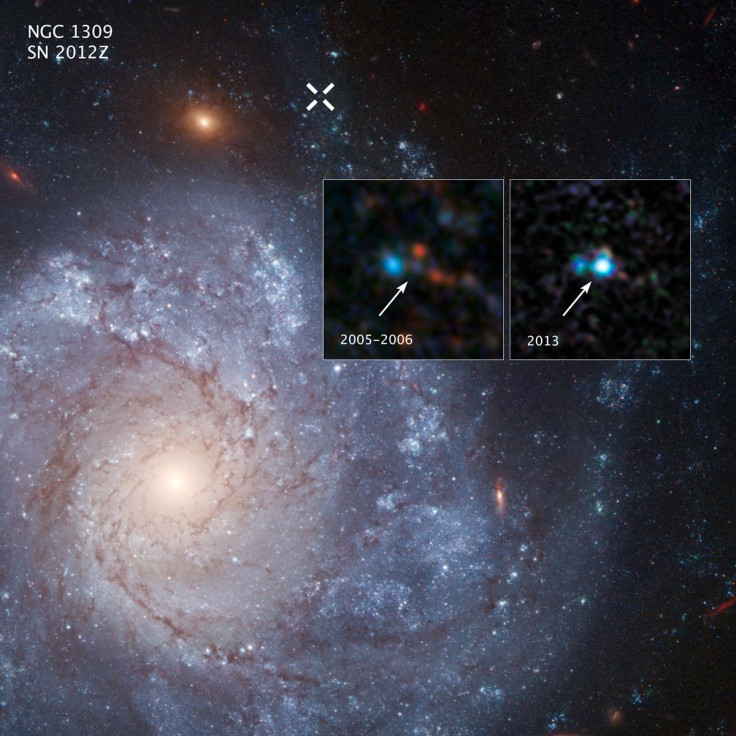Zombie Star: Hubble Spots The Remains Of A Supernova [PHOTO]

The Hubble Space Telescope observed a weak supernova 110 million light-years away and found something unusual: a zombie star. Usually a supernova, the explosion of a dying star, destroys the star, but Hubble captured what appears to be a small fragment of the star that survived.
The supernova, classified as SN2012Z, is located in the galaxy NGC 1309, a spiral galaxy in the constellation Eridanus, and was first detected by the Lick Observatory Supernova Search in January 2012, reports NASA. There are several types of supernovae. Type Ia are the most common and occur in a binary system with a white dwarf. The white dwarf's gravitational pull will siphon material from the other star in the system, and the added mass will eventually trigger a runaway nuclear chain reaction that leads to a supernova and destruction of the star.
SN2012Z was classified as a Type Iax supernova, a relatively weak supernova that does not completely destroy the white dwarf and leaves behind the zombie star. Hubble previously observed NGC 1309, and the findings were studied by astronomers led by Curtis McCully, a graduate student at Rutgers. The light from the supernova is too bright to allow for a detailed analysis of the zombie star and its companion and researchers will use Hubble to test a hypothesis on what binary system causes a Type Iax supernova. "Back in 2009, when we were just starting to understand this class, we predicted these supernovae were produced by a white dwarf and helium star binary system," said Ryan Foley, from the University of Illinois at Urbana-Champaign.
As NASA explains, the larger, more massive star soon offloaded material, hydrogen and helium, to the smaller star. The massive star would evolve into a white dwarf and the companion, which became more massive after taking on more hydrogen and helium, would swallow the white dwarf. The newly combined star would soon split into a white dwarf and a "the helium core" of the companion star, after shedding its outer gas layers. As a binary system, the white dwarf would pull matter from its companion, which would cause a supernova.
© Copyright IBTimes 2025. All rights reserved.






















